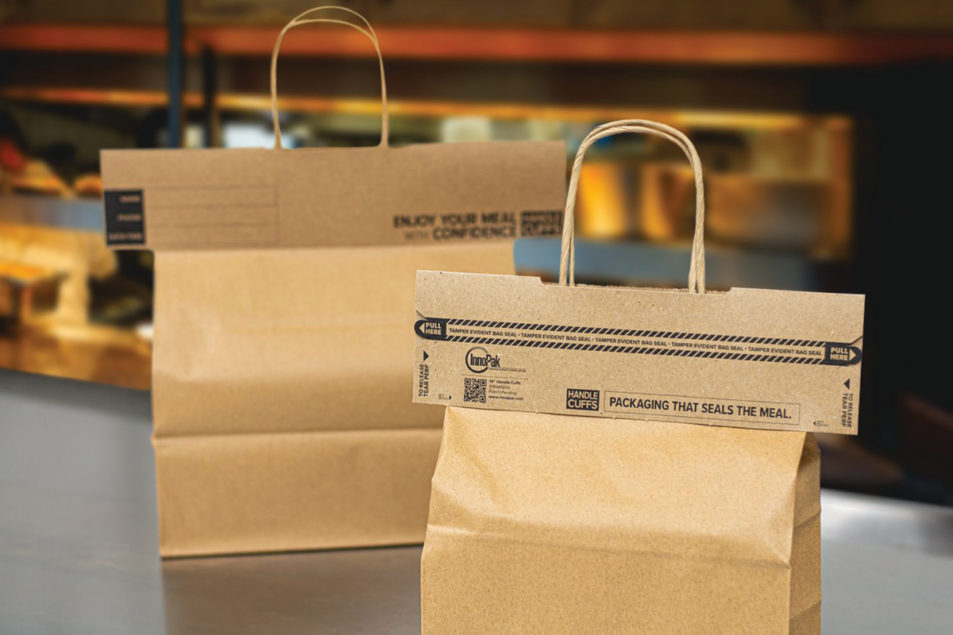
Key Takeaways:
- Efficiency is crucial in bag packaging equipment as it directly impacts productivity and cost-effectiveness.
- Streamlined packaging processes, automation, and high-speed machinery help boost efficiency in bag packaging.
- Innovations in bag packaging equipment include intelligent control systems, sustainable packaging solutions, and cutting-edge sealing technologies.
- Ensuring product quality in bag packaging involves quality assurance measures, advanced inspection systems, and selecting the right materials.
- When selecting bag packaging equipment, consider packaging requirements and factors like reliability, flexibility, ease of use, compatibility, and after-sales support.
- Optimizing the packaging line layout improves efficiency, material flow, and operator comfort.
1.Boosting Efficiency in Bag Packaging Equipment
Efficiency is crucial in bag packaging equipment as it directly impacts productivity and cost-effectiveness. By streamlining packaging processes, companies can reduce waste, improve throughput, and ultimately enhance their bottom line.
The Importance of Streamlined Packaging Processes
Streamlined packaging processes are essential for maximizing efficiency in bag packaging equipment. When packaging materials, filling machines, and sealing systems are properly integrated, it reduces the handling time and minimizes product loss.
One of the key aspects of streamlining packaging processes is automation. Automated bag filling and sealing systems offer numerous advantages over manual packaging. These machines can accurately measure and dispense the desired amount of product into each bag, ensuring consistency and reducing the risk of errors.
Moreover, automated systems can operate at higher speeds compared to manual packaging, enabling companies to meet higher production demands. This increased speed not only improves efficiency but also reduces labor costs, as fewer operators are required to manage the packaging process.
Automating Bag Filling and Sealing
Automated bag filling and sealing systems have revolutionized the packaging industry. These machines use advanced technology to streamline the bag packaging process, from filling the bags with products to sealing them securely.
There are various types of automated bag filling machines available, including gravity fillers, auger fillers, and volumetric fillers. These machines can handle a wide range of bag sizes and types, allowing for versatility in packaging different products.
Sealing is another critical aspect of bag packaging equipment. Traditional methods such as heat sealing or stitching have been replaced by advanced sealing technologies like ultrasonic and impulse sealing. These innovative techniques provide more reliable and durable seals, ensuring product freshness and preventing leakage.
Maximizing Throughput with High-Speed Packaging Machinery
In today’s fast-paced manufacturing environments, high-speed packaging machinery is crucial for maximizing throughput and meeting demanding production requirements. These machines are designed to handle a large volume of bags per minute, allowing companies to achieve greater productivity and efficiency.
High-speed bag packaging equipment utilizes advanced mechanisms and controls to ensure smooth and rapid bag processing. These machines often incorporate features like automatic bag feeding, precise product positioning, and fast sealing mechanisms to minimize downtime and maximize production rates.
Additionally, high-speed packaging machinery often integrates with other production line equipment, such as conveyors and labeling systems, to create a fully automated and seamless packaging process. This integration further optimizes efficiency and reduces the need for manual intervention.
2.Innovations Revolutionizing Bag Packaging Equipment
The bag packaging equipment industry is continuously evolving, driven by technological advancements and changing market demands. As manufacturers seek to improve sustainability, efficiency, and product quality, various innovations have emerged in bag packaging equipment.
Intelligent Control Systems for Enhanced Operation
Intelligent control systems play a vital role in modern bag packaging equipment. These systems use sensors and software to monitor and optimize machine performance, ensuring consistent and reliable operation.
With the help of real-time data analysis, intelligent control systems can detect and adjust for variations in product flow, bag filling accuracy, and sealing quality. This capability minimizes waste, reduces product rejection rates, and improves overall equipment effectiveness.
Furthermore, intelligent control systems enable remote monitoring and diagnostics, allowing operators to identify and resolve issues promptly. This remote access capability significantly reduces downtime and enhances maintenance efficiency.
The Rise of Sustainable Packaging Solutions
Sustainability is a growing concern in the packaging industry, and bag packaging equipment is no exception. Manufacturers are increasingly embracing sustainable packaging solutions to reduce their environmental footprint and meet consumer demands for eco-friendly products.
One of the key innovations in sustainable packaging is the development of biodegradable and compostable materials for bags. These materials, often derived from renewable resources, offer similar performance and functionality to traditional plastic bags but have a significantly lower environmental impact.
In addition to eco-friendly materials, bag packaging equipment now integrates energy-saving features to minimize power consumption. Advanced technologies like servo-driven systems and energy-efficient motors help reduce energy waste while maintaining high levels of productivity.
Exploring Cutting-Edge Bag Sealing Technologies
Bag sealing is a critical aspect of packaging, ensuring product freshness, safety, and shelf life. In recent years, several cutting-edge bag sealing technologies have been developed to improve seal quality, strength, and efficiency.
Ultrasonic sealing is one such technology that has gained popularity in the bag packaging industry. This technique uses high-frequency vibrations to create heat and molecular bonding, resulting in strong and airtight seals. Ultrasonic sealing offers benefits such as faster processing times, reduced energy consumption, and improved seal integrity.
Another innovative sealing technology is impulse sealing, which uses controlled heat and pressure to create secure seals. Impulse sealing is ideal for packaging materials like polyethylene and polypropylene and offers superior seal strength, preventing leaks and product contamination.
3.Ensuring Quality in Bag Packaging
Ensuring product quality and integrity is a top priority in bag packaging. From selecting the right materials to implementing advanced inspection systems, maintaining quality throughout the packaging process is crucial for delivering reliable and attractive products.
The Role of Quality Assurance in Packaging Processes
Quality assurance plays a vital role in bag packaging processes, ensuring that products meet the desired standards of quality, safety, and performance. This includes implementing strict quality control measures at each stage of the packaging process.
Quality assurance starts with proper material selection. Bag manufacturers must choose materials that are suitable for the specific product, considering factors such as barrier properties, durability, and visual appeal. Thorough testing and analysis of materials help identify any potential issues before they affect the final product.
Moreover, quality control techniques like statistical process control and statistical quality control are essential for monitoring and maintaining consistent quality during bag manufacturing and packaging. By continuously monitoring and analyzing key process parameters, manufacturers can identify and rectify any deviations, ensuring that only high-quality bags are produced.
Advanced Inspection Systems for Product Integrity
Advanced inspection systems are indispensable for ensuring product integrity in bag packaging. These systems employ various technologies, such as vision systems, X-ray inspection, and metal detectors, to detect and eliminate packaging defects and contaminants.
Vision systems use cameras and image analysis software to inspect bags for defects such as seal integrity, print quality, and label placement. This technology ensures that each bag meets the required standards and eliminates the risk of defective products reaching the market.
X-ray inspection systems are commonly used in the food industry to detect foreign objects, such as metal, glass, or bone, inside sealed bags. These systems can identify even small contaminants, preventing potential health hazards and product recalls.
Choosing the Right Materials for Durable Bag Packaging
Selecting the right materials is crucial for achieving durable and reliable bag packaging. The choice of materials depends on factors such as product characteristics, packaging requirements, and environmental considerations.
For example, products that require high barrier properties, such as perishable foods or pharmaceuticals, may require laminated materials with excellent sealing capabilities. These materials help maintain product freshness by preventing oxygen and moisture from entering the bag.
On the other hand, non-perishable products may utilize materials that prioritize visual appeal and durability, such as stand-up pouches or woven polypropylene bags. These materials offer strength and resistance to tearing, ensuring that the product remains intact during transportation and storage.
4.Selecting the Right Bag Packaging Equipment for Your Needs
Choosing the right bag packaging equipment is a crucial decision that impacts overall efficiency, productivity, and product quality. Several factors should be considered when evaluating different options and finding the equipment that best suits your specific packaging needs.
Understanding Your Packaging Requirements
Before selecting bag packaging equipment, it is essential to thoroughly understand your packaging requirements. Consider factors such as the type and size of bags you need to package, the desired production capacity, and any special requirements or features your product may have.
Analyze your production volume and growth projections to ensure that the selected equipment can handle your current and future packaging needs. It is also important to consider any specific industry regulations or standards that may affect your packaging process.
Factors to Consider When Choosing Bag Packaging Machinery
When evaluating different bag packaging machinery options, there are several key factors to consider:
– Machine reliability and durability: Choose equipment from reputable manufacturers known for producing reliable and durable machines.
– Flexibility and adaptability: Look for equipment that can handle a variety of bag sizes and types, allowing for versatility in packaging different products.
– Ease of use and maintenance: User-friendly interfaces and easy maintenance routines can significantly reduce training and maintenance time.
– Compatibility with other equipment: Ensure that the chosen equipment can integrate seamlessly with any existing production line equipment.
– After-sales support and service: Consider the availability of spare parts, technical support, and warranty coverage offered by the equipment manufacturer.
Optimizing Packaging Line Layout for Efficiency
Optimizing the layout of your packaging line is crucial for maximizing efficiency and minimizing bottlenecks. A well-designed layout ensures smooth material flow, reduces handling time, and minimizes the risk of errors or contamination.
Consider the sequence of the various packaging processes, such as bag filling, sealing, labeling, and inspection, and arrange the equipment accordingly. Efficient material handling, such as using conveyors or robotics, can further improve workflow and reduce manual labor requirements.
Additionally, implementing proper ergonomic design principles in the packaging line layout can improve operator comfort and safety, leading to increased productivity and reduced downtime.
FAQ
FAQ 1: What are the key factors in boosting efficiency in bag packaging equipment? – Efficiency in bag packaging equipment can be boosted by streamlining packaging processes, automating bag filling and sealing, and utilizing high-speed packaging machinery.
FAQ 2: What are some innovations revolutionizing bag packaging equipment? – Innovations in bag packaging equipment include intelligent control systems, sustainable packaging solutions, and cutting-edge sealing technologies.
FAQ 3: What role does quality assurance play in bag packaging processes? – Quality assurance is crucial in bag packaging processes as it ensures products meet the desired standards of quality, safety, and performance.
FAQ 4: What are some advanced inspection systems for product integrity in bag packaging? – Advanced inspection systems such as vision systems, X-ray inspection, and metal detectors are used to detect and eliminate packaging defects and contaminants.
FAQ 5: How do you choose the right materials for durable bag packaging? – The choice of materials for durable bag packaging depends on factors such as product characteristics, packaging requirements, and environmental considerations.
FAQ 6: What factors should be considered when selecting bag packaging equipment? – When selecting bag packaging equipment, factors such as machine reliability and durability, flexibility and adaptability, ease of use and maintenance, compatibility with other equipment, and after-sales support should be considered.
FAQ 7: How can the layout of the packaging line be optimized for efficiency? – The layout of the packaging line can be optimized for efficiency by considering the sequence of packaging processes, implementing efficient material handling, and incorporating proper ergonomic design principles.
FAQ 8: How can bag packaging equipment enhance productivity and cost-effectiveness? – Bag packaging equipment enhances productivity and cost-effectiveness by reducing waste, improving throughput, and optimizing efficiency through automation and high-speed machinery.



